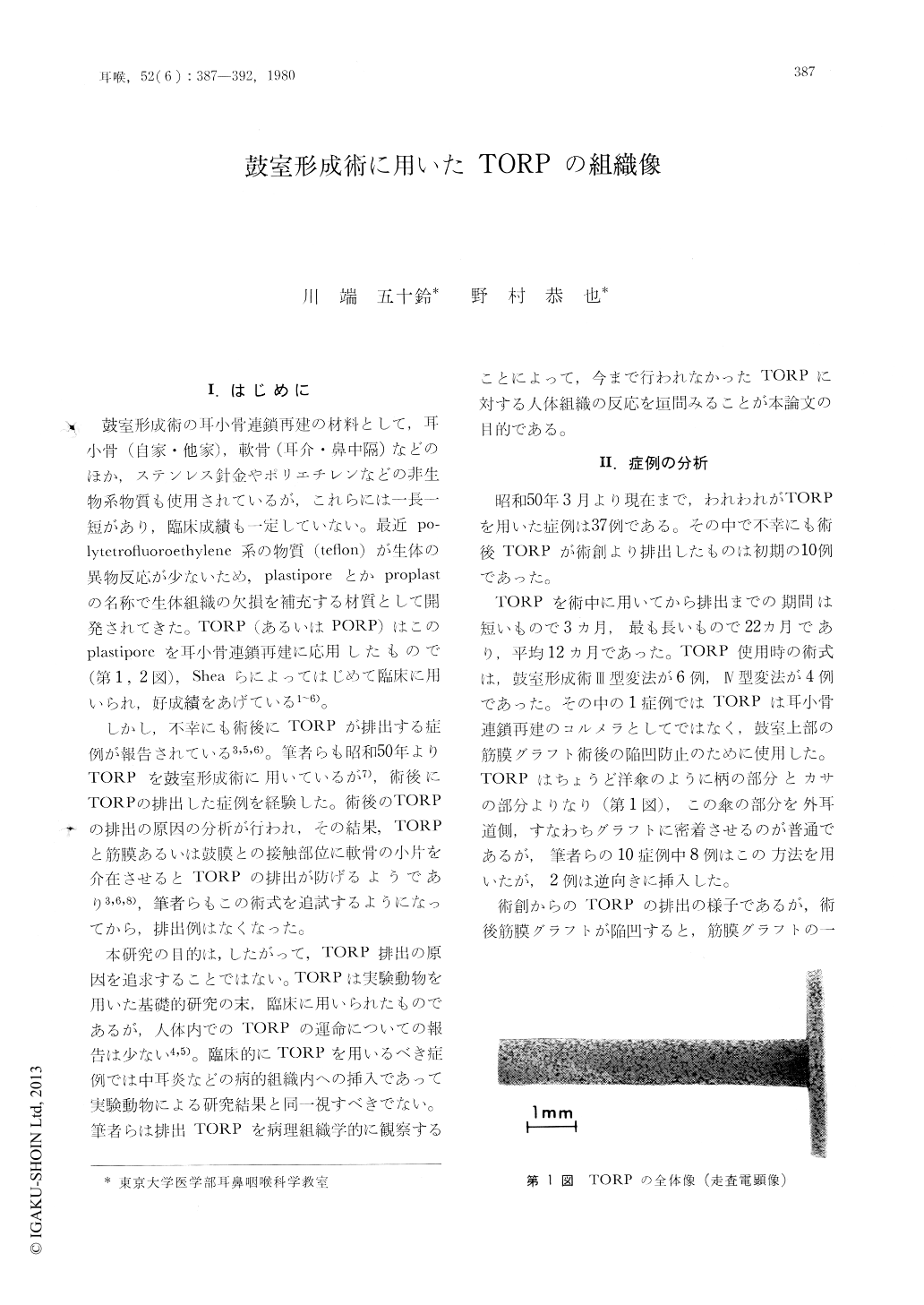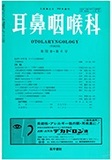Japanese
English
- 有料閲覧
- Abstract 文献概要
- 1ページ目 Look Inside
I.はじめに
鼓室形成術の耳小骨連鎖再建の材料として,耳小骨(自家・他家),軟骨(耳介・鼻中隔)などのほか,ステンレス針金やポリエチレンなどの非生物系物質も使用されているが,これらには一長一短があり,臨床成績も一定していない。最近polytctrofluoroethylene系の物質(teflon)が生体の異物反応が少ないため,plastiporeとかproplastの名称で生体組織の欠損を補充する材質として開発されてきた。TORP(あるいはPORP)はこのplastiporeを耳小骨連鎖再建に応用したもので(第1,2図),Sheaらによってはじめて臨床に用いられ,好成績をあげている1〜6)。
しかし,不幸にも術後にTORPが排出する症例が報告されている3,5,6)。筆者らも昭和50年よりTORPを鼓室形成術に用いているが7),術後にTORPの排出した症例を経験した。術後のTORPの排出の原因の分析が行われ,その結果,TORPと筋膜あるいは鼓膜との接触部位に軟骨の小片を介在させるとTORPの排出が防げるようであり3,6,8),筆者らもこの術式を追試するようになってから,排出例はなくなった。
TORP (total ossicular replacement prosthesis), which is a composite of teflon polymer and elemental carbon, has been widely used in reconstructive surgery of the middle ear. Unfortunately, there are cases in which the prosthesis shows post-operative extrusion. In order to evaluate the fate of TORP within the human middle ear, the extruded TORPs were histopathologically examined under light and scanning electron microscope. It appears that TORP causes less inflammatory and foreign body reaction, and its ultraporous nature allows fibrous tissue ingrowth. Since the risk of the extrusion can be prevented with the use of a piece of cartilage between the TORP and the eardrum, it is concluded that TORP shows an useful artificial ossicle in tympanoplasty.

Copyright © 1980, Igaku-Shoin Ltd. All rights reserved.


